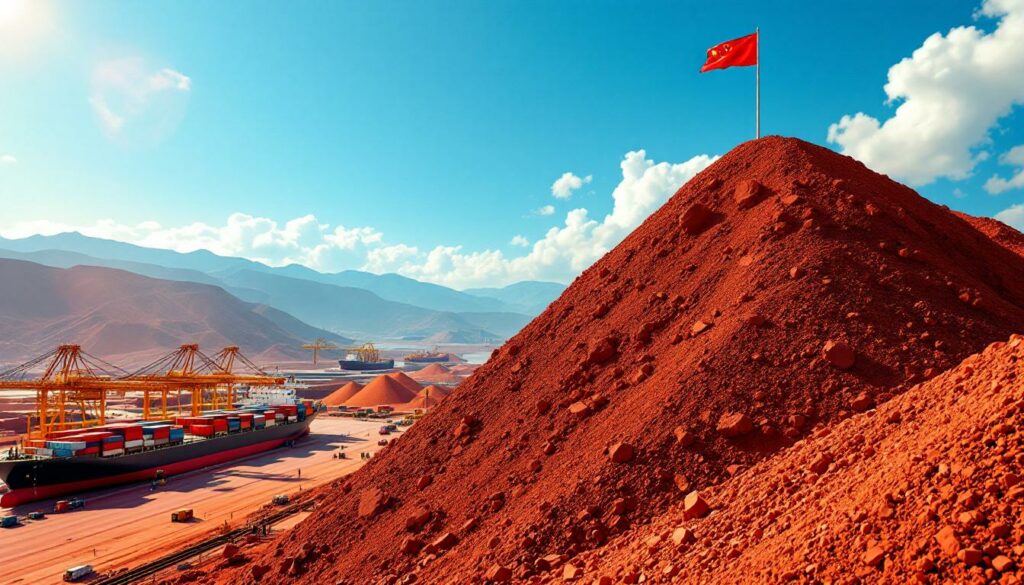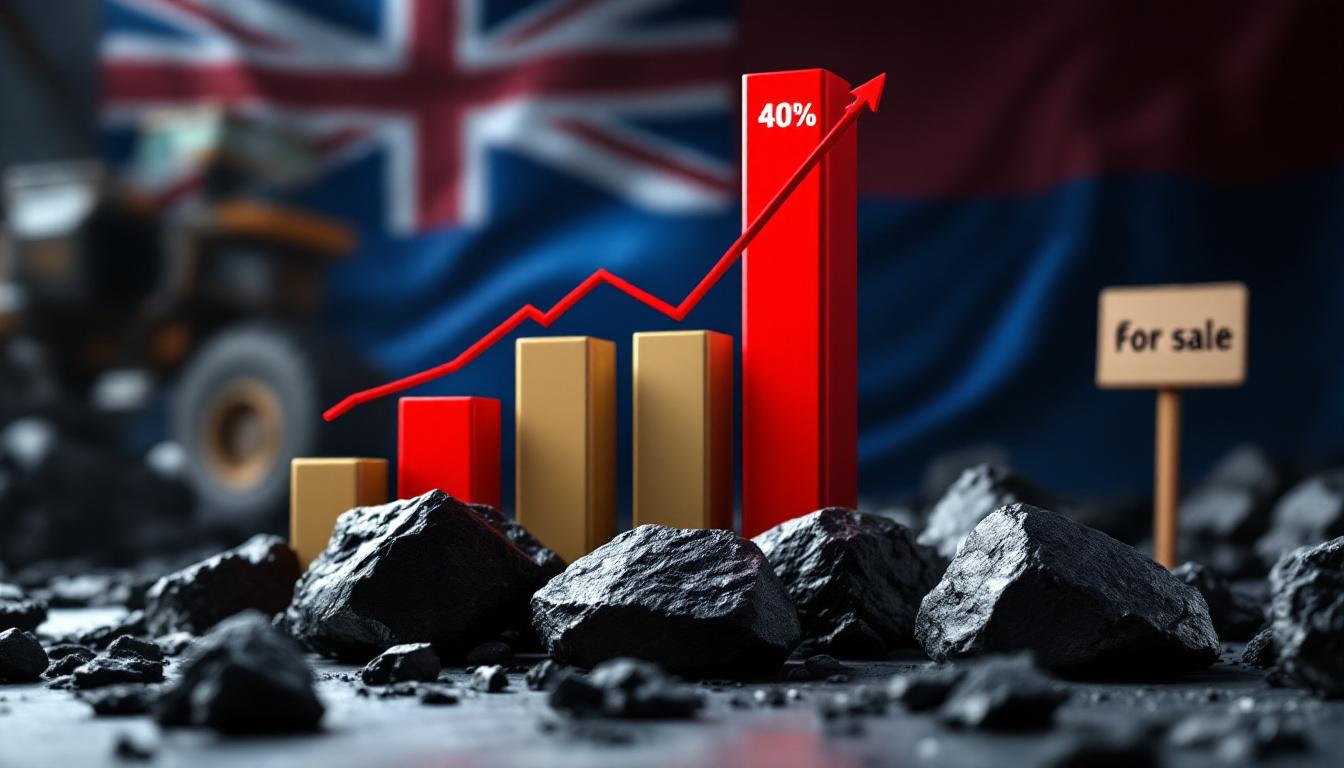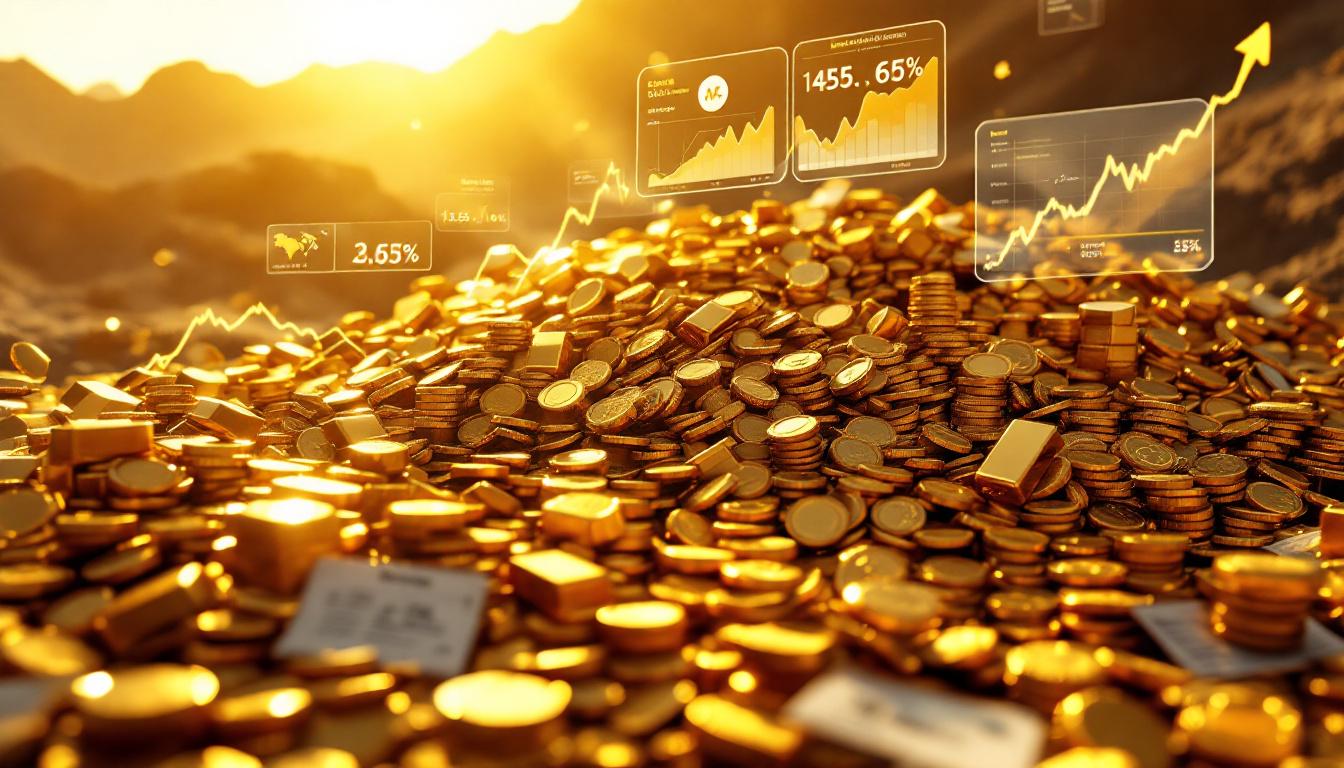Guinea's Bauxite Boom: Analyzing the 36% Export Surge to China
Guinea's bauxite industry has experienced an unprecedented surge in exports during the first half of 2025, setting new records and reinforcing the country's position as a global mineral powerhouse. This remarkable growth comes despite regulatory challenges, highlighting the resilience of Guinea's mining sector and its critical importance to global aluminum supply chains.
How Has Guinea's Bauxite Export Industry Transformed in 2025?
Guinea's bauxite export industry has undergone a dramatic transformation in 2025, characterized by explosive growth, increased operational efficiency, and strengthened international partnerships. This metamorphosis represents not just a statistical anomaly but a fundamental shift in the country's resource economy.
Record-Breaking Export Performance
Guinea's bauxite exports reached an unprecedented 99.8 million metric tons in the first half of 2025, representing a remarkable 36% year-over-year increase from the 73.4 million tons recorded in H1 2024. This exceptional performance puts the nation on track to potentially exceed 199 million tons in annual shipments by year-end.
The export boom occurred despite significant regulatory restructuring initiated by Guinea's military government. While these new compliance requirements forced several operations to halt production entirely, the industry's overall resilience has been remarkable.
According to industry analysts, this growth trajectory was facilitated by strategic infrastructure investments made between 2022-2024 that have begun paying dividends. The expansion of port facilities from five to nine active export terminals has substantially reduced the logistical bottlenecks that previously constrained growth.
Chinese Demand Driving Growth
The primary engine behind Guinea's bauxite boom is undoubtedly China's voracious appetite for raw materials. Recent data from China's National Bureau of Statistics shows aluminum production increased by 4.0% to 18.59 million tons in just the first five months of 2025.
This surge in Chinese aluminum output stems from two primary factors:
- Infrastructure spending: China's renewed focus on domestic infrastructure development has significantly increased aluminum demand
- Manufacturing rebound: Following several challenging years, China's manufacturing sector has experienced robust recovery
The significance of this relationship cannot be overstated. China accounts for approximately 60% of global aluminum production, making its consumption patterns the definitive factor in global bauxite markets. This interconnection is further cemented by the fact that Chinese-controlled firms now command over 60% of Guinea's bauxite exports.
Mining industry consultant Alexander Barington notes: "Guinea's export surge represents a textbook example of supply-side response to Chinese industrial policy. When Beijing increases infrastructure spending, the effects ripple through global mineral supply chains, with Guinea's mines among the first to feel the impact."
Which Companies Dominate Guinea's Bauxite Export Market?
The landscape of Guinea's bauxite industry is characterized by a distinct hierarchy, with Chinese-backed operations firmly established at the apex of the export market. This dominance reflects both strategic investments and operational capabilities that have allowed these companies to navigate Guinea's complex regulatory environment.
Chinese-Backed Operations Lead the Market
SMB (Société Minière de Boké) has firmly established itself as the undisputed market leader, exporting an impressive 31.2 million tons in H1 2025—nearly one-third of Guinea's total bauxite shipments. This dominance stems from a combination of early-mover advantage, substantial capital investment, and strong political relationships.
Other major Chinese players have also maintained strong export volumes:
- CHALCO: 8.9 million tons exported
- CDM-CHINE: 4.1 million tons contributed
- SPIC: 1.8 million tons shipped
This concentration of market power is no accident. Chinese investors maintain controlling interests in SMB through a complex ownership structure that includes Winning Shipping Ltd, Shandong Weiqiao, and Yantai Port Group. This strategic alignment allows for vertical integration from mine to market, with dedicated shipping arrangements enhancing efficiency.
Industry observers note that these Chinese-backed operations benefit from direct financing connections to China's Belt and Road Initiative, providing capital advantages that competitors struggle to match. Furthermore, their technical capabilities in developing medium-grade deposits give them operational flexibility across Guinea's varied bauxite terrain.
Impact of Regulatory Changes on Market Participants
The military government's regulatory crackdown has created a stark divide between companies with the resources to adapt and those unable to meet new compliance requirements. Several once-productive operations recorded zero exports during H1 2025:
- GAC: Operations completely halted despite previous significant output
- KIMBO: Export activity suspended following regulatory reviews
- SBG: Production ceased during compliance verification process
- Kambia Bauxite Mining: Remained inactive throughout the period
The regulatory changes implemented in late 2024 emphasized environmental protection, community benefit-sharing, and stricter financial transparency. While established Chinese firms navigated these requirements through substantial compliance investments, smaller operators lacked both the capital and institutional capacity to adapt quickly.
A mining compliance expert with experience in West Africa observed: "The new regulatory framework effectively creates a two-tier market—those with the resources to implement comprehensive environmental management systems and community development programs, and those without. This naturally favors larger, well-capitalized operations with established government relationships."
How Is Guinea's Port Infrastructure Evolving to Support Export Growth?
Guinea's remarkable export growth would be impossible without the parallel development of port infrastructure. The country has implemented a strategic port diversification approach that has fundamentally altered its export logistics landscape.
Port Diversification Strategy
Guinea has successfully transitioned from an export system heavily dependent on a single hub to a diversified network of nine active port facilities. This transformation has significantly enhanced export capacity while reducing vulnerability to bottlenecks.
The distribution of export volume across facilities illustrates this diversification:
| Port Facility | Percentage of Total Exports | Notable Features |
|---|---|---|
| Dapilon/Katougouma | 30% | Newest deep-water berths, 18m draft |
| Kokaya | 25% | Expanded in 2023, specialized loading systems |
| Kamsar (traditional hub) | 15% | Legacy operations, limited expansion potential |
| Other facilities | 30% | Various smaller operations with specialized functions |
This port diversification strategy has generated several advantages:
- Reduced congestion: Spreading volume across multiple facilities has eliminated the severe delays once common at Kamsar
- Specialized capabilities: Newer ports feature purpose-built loading systems optimized for bauxite handling
- Geographic risk mitigation: Distributed locations provide options during seasonal weather disruptions
- Reduced transportation distances: Proximity to mining operations reduces inland transportation costs
The traditional Kamsar hub, while still operational, has seen its relative importance diminish as newer, more efficient facilities come online. This transition has been deliberate and phased to ensure continuity of exports during the expansion process.
Investment in Export Capacity
SMB's announced plans to invest up to $1 billion in further export infrastructure development signals confidence in Guinea's long-term bauxite project benefits. These investments will focus on three primary areas:
- Port expansion projects: Increasing berth capacity and deepening channels to accommodate larger vessels
- Conveyor systems: Enhancing the efficiency of material handling from mine to vessel
- Digital infrastructure: Implementing advanced logistics management systems to optimize throughput
These strategic investments address the previous capacity constraints that had limited Guinea's export potential. By increasing the efficiency of the export supply chain, these projects will enable higher volumes while potentially reducing per-ton handling costs.
Maritime logistics specialist Mariama Diallo explains: "Guinea's port development strategy represents a textbook case of infrastructure enabling economic growth. The calculated expansion of export facilities has effectively removed the ceiling that previously constrained bauxite shipments, allowing mining capacity to be the determining factor rather than logistics bottlenecks."
What Are the Geopolitical Implications of Guinea's Bauxite Trade?
The dramatic growth in Guinea's bauxite exports to China carries significant geopolitical implications that extend far beyond simple trade statistics. This resource relationship is reshaping economic dependencies and raising concerns about mineral supply chain concentration.
China's Growing Resource Influence
Guinea's increasing dependence on China demand trends represents a textbook example of resource-based economic alignment. With Chinese-controlled firms commanding over 60% of Guinea's bauxite shipments, the relationship has evolved beyond mere commercial ties into strategic interdependence.
This mineral relationship is being further deepened through the development of the Simandou iron ore project, which is majority Chinese-owned. When fully operational, this project will create another significant resource channel between Guinea and China, reinforcing the economic ties between the nations.
"What we're witnessing is the manifestation of China's long-term resource security strategy," notes international relations scholar Dr. Ibrahim Touré. "By establishing controlling positions in Guinea's key mineral sectors, Beijing gains not just raw materials but also strategic leverage in West Africa."
This resource influence extends beyond economics into political relationships. China's investment in Guinea has been accompanied by diplomatic support, development assistance, and infrastructure financing that collectively strengthen ties between the nations. The result is Guinea cementing its position as the world's largest bauxite supplier with a predominantly eastern-facing export orientation.
Western governments have expressed growing concern about critical mineral supply chain concentration, particularly as aluminum's importance in green technologies continues to grow. The U.S. and European Union have begun developing strategies to diversify critical mineral sourcing, but face significant challenges in competing with China's established position in countries like Guinea.
Regulatory Environment and Industry Oversight
Guinea's military government has implemented stricter mining regulations that have reshaped the competitive landscape of the bauxite industry. These regulatory changes focus on several key areas:
- Environmental protection: Enhanced requirements for impact assessments and mitigation
- Community benefits: Increased local content requirements and development contributions
- Financial transparency: More rigorous reporting and audit requirements
- Technical standards: Stricter operational safety and efficiency guidelines
This regulatory restructuring has caused operational disruptions for some companies, particularly those with limited capital resources or political connections. The regulatory changes have affected smaller operators disproportionately, with several companies recording zero exports during H1 2025.
The government's challenge lies in balancing regulatory oversight with export growth objectives. Too stringent enforcement risks undermining the very industry that provides critical government revenue, while insufficient oversight could lead to environmental degradation and social conflicts that threaten long-term stability.
Industry analyst Amadou Bah observes: "Guinea's new regulatory approach represents an attempt to capture more value from its mineral resources while maintaining the growth trajectory. The key question is whether the administration can implement these changes without significantly disrupting export volumes or discouraging future investment."
What Is the Global Significance of Guinea's Bauxite Industry?
Guinea's bauxite industry occupies a position of extraordinary importance in global mineral supply chains, with ramifications that extend throughout the global economy. Understanding this significance requires examining both Guinea's unique resource position and the critical applications of the aluminum it ultimately produces.
Guinea's Position in Global Bauxite Supply
Guinea stands as the world's second-largest bauxite producer by reserves, with an estimated 7.4 billion metric tons of proven reserves. Despite ranking second in reserves, Guinea has emerged as the largest global bauxite supplier by export volume, overtaking traditional leaders Australia and Brazil.
The country's competitive advantage stems from several factors:
- Ore quality: Guinea's bauxite deposits feature favorably high aluminum oxide content
- Accessibility: Many deposits allow for efficient surface mining with limited overburden
- Export orientation: Limited domestic processing capacity means most production is exported
- Strategic location: Proximity to shipping lanes enables cost-effective transport to major markets
This dominant supply position gives Guinea significant influence over global aluminum markets. Any disruption to Guinean exports—whether from political instability, regulatory changes, or logistical constraints—has immediate repercussions throughout global supply chains.
Aluminum Industry Dependencies
Bauxite serves as the essential feedstock for aluminum production, with approximately 4-5 tons of bauxite required to produce one ton of aluminum. This relationship creates an inextricable link between Guinea's mining sector and global manufacturing.
Aluminum's critical applications span numerous essential industries:
- Transportation: Lightweight components for automotive, aerospace, and shipping sectors
- Construction: Building materials, window frames, and structural elements
- Packaging: Food and beverage containers, pharmaceutical packaging
- Electronics: Components, casings, and heat sinks
- Renewable energy: Solar panel frames, wind turbine components
The global aluminum market dynamics are profoundly influenced by Guinea's export policies. Any significant shift in Guinea's production capacity, export regulations, or diplomatic alignments creates ripple effects throughout these dependent industries.
"The aluminum supply chain exemplifies the vulnerability of modern industrial systems to single-source dependencies," explains metals market analyst Jean-Claude Mbemba. "With Guinea accounting for such a significant percentage of global bauxite exports, any disruption would quickly cascade through manufacturing systems worldwide."
This concentration of production highlights supply chain vulnerabilities that have become increasingly apparent to policymakers and industry leaders. The heavy dependence on Guinean bauxite, predominantly flowing to Chinese processors, creates potential choke points that could affect global manufacturing during periods of global trade tensions.
Future Outlook for Guinea's Bauxite Industry
The future trajectory of Guinea's bauxite industry will be shaped by a complex interplay of market forces, regulatory developments, infrastructure investments, and geopolitical considerations. While current performance suggests continued growth, several factors will influence the sustainability of this expansion.
Expansion Projections and Challenges
Based on the remarkable H1 2025 performance, Guinea appears positioned to achieve annual bauxite exports potentially exceeding 199 million tons. This projection assumes continued strong demand from China and steady operational performance from the major producers.
However, several challenges could impact this growth trajectory:
- Regulatory uncertainty: Ongoing regulatory restructuring creates operational unpredictability
- Infrastructure constraints: Despite improvements, transportation networks remain vulnerable
- Political stability concerns: Guinea's political transition continues to evolve
- Market concentration risk: Heavy dependence on Chinese demand creates vulnerability
The development of infrastructure remains crucial to sustaining export growth. While port capacity has expanded significantly, inland transportation networks require further investment insights to avoid becoming bottlenecks as production volumes increase.
Environmental considerations also present growing challenges. Guinea's forests and watersheds face increasing pressure from mining activities, creating potential conflicts between economic development and environmental protection. The government's ability to enforce environmental regulations while maintaining production growth will significantly influence the industry evolution trends.
Strategic Resource Relationships
Guinea's deepening resource export dependence on China presents both opportunities and risks. While Chinese demand has fueled extraordinary growth, this concentration creates vulnerability to shifts in Chinese economic policy or growth rates.
Western nations have begun efforts to diversify critical mineral supply chains, potentially creating new market opportunities for Guinean bauxite. However, establishing these alternative channels would require significant investment in relationships and infrastructure that currently favor Chinese operators.
There is potential for new international partnerships to emerge as global aluminum demand grows, particularly in developing economies. India, for example, has expressed interest in securing bauxite supplies to support its growing aluminum industry, potentially creating a more diversified export market for Guinea.
The long-term sustainability of current export growth trajectory ultimately depends on Guinea's ability to balance multiple competing priorities:
- Maximizing economic returns while ensuring environmental protection
- Maintaining attractive investment conditions while increasing regulatory oversight
- Leveraging existing partnerships while diversifying market relationships
- Accelerating development while ensuring equitable distribution of benefits
"Guinea stands at a pivotal moment in its resource development journey," observes economist Dr. Fatima Touré. "The decisions made in the next few years regarding regulation, infrastructure investment, and international partnerships will determine whether the current bauxite boom represents a temporary surge or the foundation of sustainable economic transformation."
FAQ: Guinea's Bauxite Industry
How has Guinea's bauxite export volume changed in 2025?
Guinea's bauxite exports increased by 36% in the first half of 2025, reaching a record 99.8 million metric tons compared to 73.4 million tons during the same period in 2024. This growth occurred despite regulatory challenges that forced some companies to halt operations entirely.
Which company exports the most bauxite from Guinea?
SMB (Société Minière de Boké), backed by Chinese investors, is the market leader, accounting for 31.2 million tons – nearly one-third of Guinea's total bauxite exports in H1 2025. This dominance reflects SMB's substantial investment in both mining operations and export infrastructure.
How has Guinea's military government affected the bauxite industry?
The military government has implemented stricter mining regulations that have forced several companies to halt operations entirely, while established firms have maintained steady shipments despite the regulatory changes. These regulations aim to increase environmental protection, community benefits, and financial transparency.
What percentage of Guinea's bauxite exports go to China?
While the exact percentage isn't specified, Chinese-controlled firms command over 60% of Guinea's bauxite shipments, and China is the primary destination for Guinean bauxite exports. This concentration reflects China's position as the world's largest aluminum producer, accounting for approximately 60% of global production.
Why is Guinea's bauxite important to global supply chains?
Guinea is the world's largest bauxite supplier and second-largest producer, providing essential raw materials for aluminum production, which is critical for transportation, construction, and packaging industries globally. Any disruption to Guinean exports has immediate repercussions throughout global manufacturing supply chains.
Ready to Capitalise on the Next Major Mineral Discovery?
Stay ahead of the market with instant notifications on significant ASX mineral discoveries through Discovery Alert's proprietary Discovery IQ model, turning complex mineral data into actionable insights. Understand why historic discoveries can generate substantial returns by visiting Discovery Alert's dedicated discoveries page and begin your 30-day free trial today.




